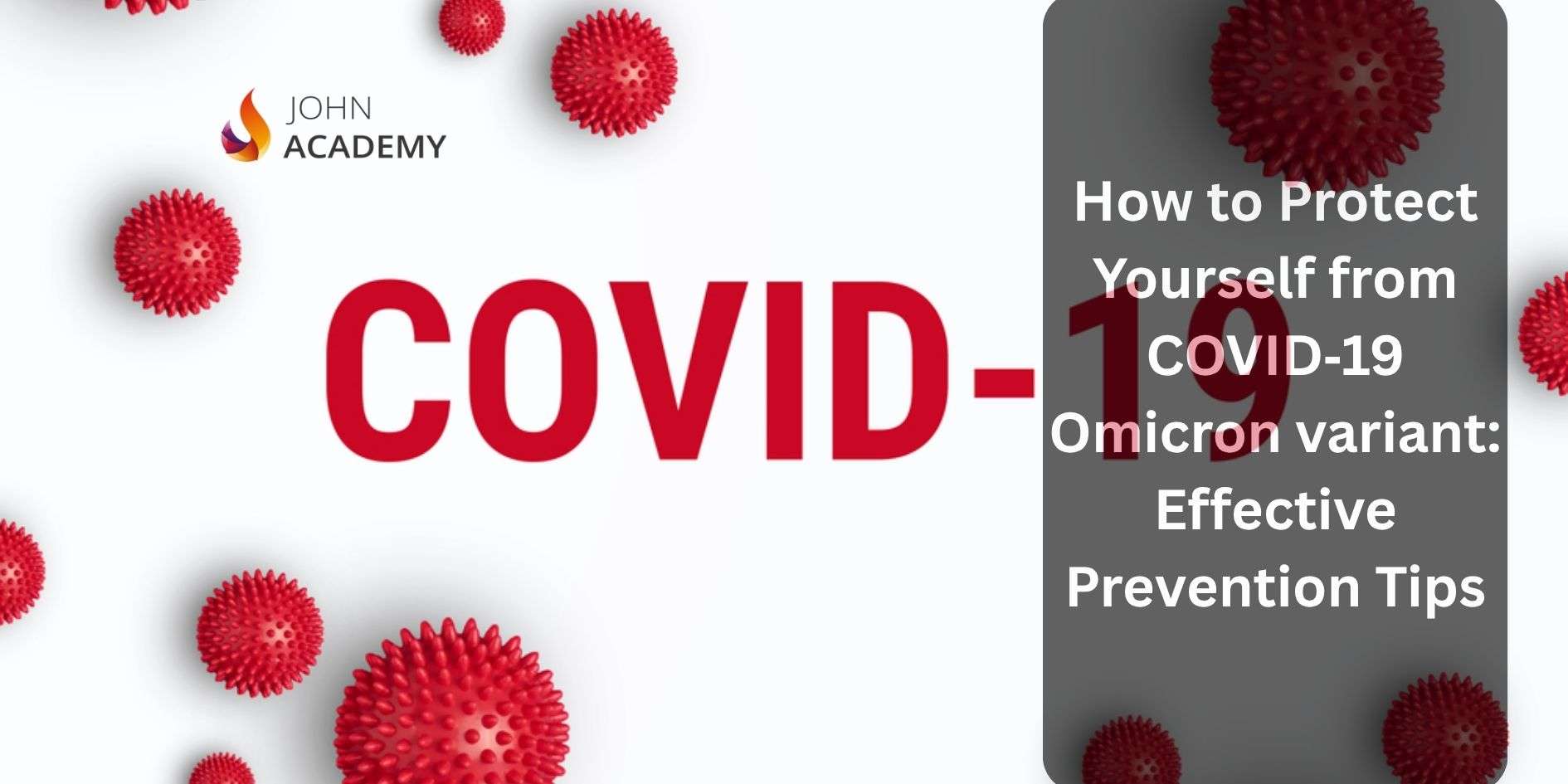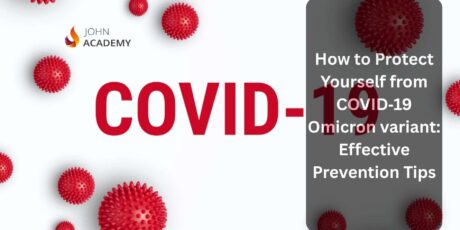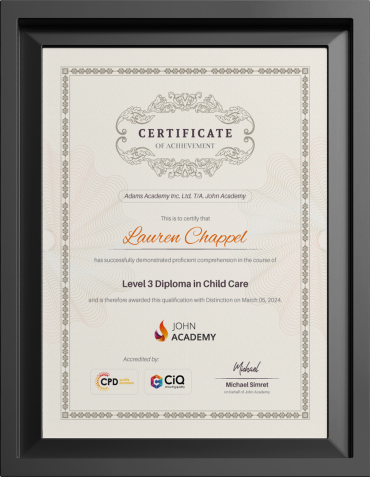

As we move through 2025, the global COVID‑19 landscape remains in a state of flux. Though the pandemic’s acute emergency phase officially ended in 2023, the virus itself is far from dormant. SARS-CoV-2 has become endemic, meaning it will likely remain part of our lives for years to come, much like seasonal influenza. Yet, unlike the flu, COVID‑19 continues to present challenges through its rapid evolution, especially within the Omicron variant family, which remains the dominant driver of global infections.
Omicron, first detected in late 2021, has undergone extensive genetic changes, giving rise to a series of subvariants that outcompete previous strains through greater transmissibility and immune evasion. In 2025, NB.1.8.1, unofficially dubbed “Nimbus,” has emerged as a particularly fast-spreading subvariant. Noted for its distinctive symptom—a “razor blade” sore throat that is more painful than those associated with earlier strains—Nimbus has already established a foothold in North America, Europe, Southeast Asia, and parts of Africa. Early surveillance suggests it now makes up over 10% of new infections globally, and is particularly prevalent in urban clusters.
Other subvariants—such as LP.8.1, XEC (a recombinant of JN.1 lineages), KP.3.1.1, and JN.1 itself—continue to circulate. These strains vary in how easily they spread, how well they escape prior immunity, and how sick they make people. As a group, they share Omicron’s signature characteristics: shorter incubation periods, faster transmission, and an ability to infect individuals with previous vaccine-induced or natural immunity. This makes reinfections increasingly common, even within months of recovery or vaccination.
While the general severity of Omicron-related illness has decreased thanks to population-level immunity, COVID-19 still poses a real risk, especially to high-risk groups, including:
- 1.People aged 65 and older
- 2.Those with underlying health conditions (e.g., diabetes, heart disease, asthma)
- 3.The immunocompromised
- 4.Pregnant individuals
- 5.Unvaccinated or undervaccinated individuals
Importantly, researchers are now investigating whether long COVID symptoms may differ between earlier variants and newer subvariants like Nimbus and XEC. Some evidence suggests that the risk of long-term complications, while lower than during Delta waves, has not disappeared, and may still affect a significant portion of those infected, including young adults.
Compounding the issue, public attention has shifted away from COVID, leading to lower testing rates, relaxed personal precautions, and declining booster uptake. This creates an environment where new subvariants can silently spread before authorities detect outbreaks.
In light of these changes, it’s more important than ever to stay informed and take proactive steps to protect yourself and your community. This comprehensive 2025 guide is based on the latest evidence from WHO, CDC, ECDC, and peer-reviewed research, and is designed to help you:
- Understand the risks posed by the 2025 Omicron subvariants,
- Recognise early symptoms and testing strategies,
- Choose the right masks, vaccines, and precautions, and
- Make informed decisions whether at work, while travelling, or when caring for loved ones.
Whether you’re a frontline worker, a commuter, a parent, or a caregiver, this guide will equip you with practical, science-backed tools to reduce risk, strengthen your protection, and play a role in safeguarding public health.
Table of Contents
1. Know What’s Circulating: COVID‑19 Variants in 2025
Understanding which COVID‑19 variants are currently in circulation is essential for staying informed, making smart health choices, and knowing when to be extra cautious. In 2025, the Omicron lineage remains dominant but has diversified into several subvariants, each with its transmission profile, symptom patterns, and implications for vaccine effectiveness. Let’s explore the key variants of concern and interest as of mid‑2025.
NB.1.8.1 (Codename “Nimbus”)
Nicknamed “Nimbus” by health commentators and virologists, NB.1.8.1 has emerged as the most notable subvariant in the first half of 2025. The World Health Organisation (WHO) has officially categorised it as a Variant Under Monitoring (VUM) due to its rapid global spread and unusual symptom profile.
Key Characteristics of NB.1.8.1:
First detected in early 2025, now found in over 20 countries, including the U.S., UK, Canada, China, Singapore, and India.
Responsible for approximately 10–11% of global COVID-19 cases as of May 2025.
Believed to have enhanced transmissibility and a shorter incubation period than earlier Omicron subvariants.
Demonstrates moderate but notable immune escape, meaning previous infection or vaccination may not prevent infection but still offers strong protection against severe disease.
Notable Symptoms Include:
“Razor blade throat” — an unusually painful sore throat likened to swallowing metal or glass.
- Nasal congestion
- Dry cough
- Fatigue
- Low-grade fever
- Headache
- Occasional nausea or diarrhea
- Clinical Insights:
Though highly transmissible, the variant has not shown increased severity compared to previous Omicron waves.
Hospitalisation rates remain manageable, but widespread outbreaks could burden healthcare systems if left unchecked.
LP.8.1, XEC, KP.3.1.1, JN.1, and Other Circulating Strains
LP.8.1
Was dominant in late 2024; targeted in the 2024–2025 vaccine formulation.
Still active in low-surveillance areas but losing ground to newer strains.
Mild to moderate symptoms and lower immune escape compared to NB.1.8.1.
XEC (Recombinant of JN.1 Sublineages)
A genetic mix of JN.1-related subvariants.
Emerging in Europe and the U.S. since April 2025.
Brings enhanced transmissibility and moderate vaccine resistance.
Causes familiar symptoms: fatigue, sore throat, nasal congestion, mild fever.
KP.3.1.1 and JN.1
Still monitored globally.
JN.1 played a major role in 2023–2024 surges.
KP.3.1.1 is gaining traction in densely populated areas.
Symptoms remain consistent with Omicron characteristics, and severity is manageable in vaccinated individuals.
EG.5 (“Eris”)
Previously dominant in mid-2023.
Now reclassified as a Variant of Interest (VOI).
Mostly replaced by faster-spreading variants like Nimbus and XEC.
Still circulating in under-vaccinated or low-surveillance communities.
Public Health Monitoring and Response
WHO, CDC, and the ECDC continue to track variant developments using:
Genomic sequencing
Wastewater surveillance
Real-time outbreak reporting
As of June 2025:
WHO calls for continued sequencing and monitoring, especially with summer travel increasing.
CDC recommends enhanced testing, masking, and booster uptake in hotspot areas.
Why Variant Awareness Matters
Knowing what variants are circulating where you live can help you:
Decide when to upgrade to an N95 mask.
Time your next booster shot more effectively.
Prepare for symptoms that may differ from earlier infections.
Protect children, older adults, and immunocompromised loved ones.
In particular, young people and children may experience psychological and emotional stress due to frequent reinfections, disrupted schooling, or anxiety about new symptoms like Nimbus’ “razor blade throat.”
Empower your response to both physical and mental health risks in 2025.
Vaccines & Boosters in 2025: Critical Protection
Vaccination remains the cornerstone of COVID-19 prevention in 2025, even as the virus continues to mutate. While many people have already received primary vaccinations and early boosters, the waning effectiveness over time and the emergence of new subvariants have made updated annual or biannual boosters essential, especially in the face of increasingly immune-evasive strains like NB.1.8.1 (“Nimbus”), KP.3.1.1, and XEC.
What’s New in the 2024–2025 COVID-19 Vaccines?
The most recent booster formulations have been strategically updated to match the dominant Omicron sublineages circulating globally:
The 2024–2025 vaccine boosters are formulated with JN.1 and KP.2 spike protein antigens to provide broader protection against the current lineages.
The WHO and several national health agencies (e.g., CDC, UKHSA) are also reviewing LP.8.1-specific boosters for the 2025–2026 vaccination campaign to respond to shifts in regional dominance.
Some boosters are now variant-specific monovalent formulations, while others offer bivalent or trivalent protection, particularly for high-risk individuals with complex immune needs.
In 2025, mRNA vaccines continue to be the most adaptive platform, with Pfizer-BioNTech and Moderna releasing updates within months of variant emergence. Other global vaccines, including Novavax and Bharat Biotech, also offer updated protein-based or inactivated vaccines tailored to Omicron subvariants.
Why Should You Get Boosted in 2025?
While previous vaccine doses and infections do provide some lingering immunity, research shows that:
Neutralising antibody levels decline significantly after 4–6 months, especially in older adults and people with chronic illnesses.
The newer Omicron variants—including NB.1.8.1—partially evade existing immunity, meaning even fully vaccinated individuals can become infected again.
However, people who are up to date with boosters:
They are less likely to experience severe illness.
Have fewer hospitalisations and deaths.
They are at lower risk of developing long COVID, especially when reinfected.
Boosters are particularly crucial for high-risk groups, including:
Adults aged 65+.
Individuals with conditions like diabetes, heart disease, asthma, or obesity.
Pregnant people.
Those undergoing cancer treatment or immunosuppressive therapy.
Frontline workers and caregivers in the healthcare and education sectors.
Governments across the world now encourage seasonal vaccination, much like the flu shot, with many offering free or subsidised boosters at public clinics, pharmacies, and mobile units.
How Often Should You Get a Booster?
Most public health authorities in 2025 recommend:
- 1.Annual boosters for the general population.
- 2.Biannual boosters (every 6 months) for:
- 3.Adults over 65
- 4.Immunocompromised individuals
- 5.People in long-term care homes
- 6.Pregnant women after the first trimester
Your healthcare provider may also advise more frequent boosters depending on personal health risk or travel plans.
Action Plan: What You Should Do Now
Check eligibility and access:
Visit your national health agency website (e.g., NHS, CDC, Australia’s HealthDirect) for booster guidelines.
Use local health portals or call your GP to confirm the availability of updated boosters.
Book your booster if:
It’s been 6–12 months since your last COVID-19 dose.
You are in a high-risk category, regardless of time since your last shot.
You’re travelling to a region with variant surges or working in a high-contact environment.
Encourage others, especially vulnerable people, to stay protected:
Assist older relatives with scheduling or transportation.
Share trusted sources about booster benefits to counter misinformation.
Remind people that even mild illness can result in complications, especially with newer variants.
Keep records of your COVID vaccine doses:
Use digital vaccine apps, printed certificates, or national health record systems to track your booster history.

3. Masks: The Simple Barrier That Still Works
Although pandemic fatigue has set in for many, masking remains one of the most effective and low-cost defenses against COVID-19—particularly during waves driven by fast-spreading variants like NB.1.8.1 and XEC. In 2025, public health agencies worldwide continue to recommend strategic mask usage, especially in high-risk environments or around vulnerable individuals.
Best Mask Choices for 2025
- N95, FFP2, or KN95 respirators remain the gold standard for protection, as they filter out at least 95% of airborne particles, including viral aerosols.
- If these are not available, layering a surgical mask underneath a tightly fitting cloth mask can significantly improve filtration and fit.
- Keep a readily accessible supply of quality disposable masks at home, in your bag, car, and workplace—especially during travel or flu season.
Properly worn high-quality masks offer personal protection and also reduce transmission risk to those around you.
When Should You Wear a Mask in 2025?
Masking recommendations vary by region, but general guidance includes:
- During local outbreaks or variant surges: Check CDC, WHO, or your local health department’s transmission maps.
- Around high-risk individuals: Such as older adults, infants, pregnant people, or those with underlying health conditions.
- In crowded indoor settings: Trains, buses, airports, supermarkets, concerts, or poorly ventilated areas.
- If you’re symptomatic or recently exposed: Even if you test negative, masking for several days helps prevent pre-symptomatic or asymptomatic spread.
This “situational masking” approach is a practical middle ground that allows individuals to adapt based on risk levels while remaining protected.
Masking Tips for Maximum Effectiveness
To get the most out of your mask:
- 1.Ensure it fits snugly over your nose, mouth, and chin with no large gaps.
- 2.Replace disposable masks after a day’s use or if they become damp, stretched, or dirty.
- 3.Wash cloth masks daily, using hot water and soap.
- 4.Store extra masks in clean containers or zip bags to prevent contamination.
Even if mandates are lifted in many areas, voluntary masking during high-risk periods—like winter flu season or post-holiday travel—can dramatically reduce infections, including other respiratory illnesses like RSV or influenza.
Recommended for Health Sector Professionals
If you work in healthcare or manage healthcare services, understanding infection control, PPE protocols, and resource planning is essential—especially as policies evolve in response to changing variant dynamics.
4. Ventilation & Clean Air: Clearing Indoor Transmission
Omicron spread is primarily airborne. Diluting indoor air cuts transmission dramatically.
Effective Steps
- 1.Open windows and doors to create airflow; use fans if needed .
- 2.Use portable HEPA air purifiers in bedrooms and offices.
- 3.Ensure centralised HVAC systems have filters of MERV‑13 or higher.
In warmer seasons, consider outdoor gatherings as safer alternatives.
5. Hygiene & Handwashing: Still Relevant
Although airborne spread dominates, fomite transmission still occurs, and basic hygiene helps.
Effective Practices
- 1.Wash your hands for 20 seconds using soap whenever possible.
- 2.Use ≥60% alcohol hand sanitiser if soap isn’t available.
- 3.Refrain from touching your face—eyes, nose, and mouth.
- 4.Clean and disinfect high-touch surfaces in shared spaces.

6. Testing Smart: Know When & What Type
Testing Types
- 1.Rapid Antigen Tests (RATs): Quick, portable; good for symptomatic checks or pre-visit clearance.
- 2.PCR Tests: More reliable, often used for official results, travel, or if a rapid test is negative but symptoms persist.
When to Test
- If you experience any COVID-like symptoms (e.g., sore throat, fever, congestion, cough, fatigue) discovermagazine.com+1en.wikipedia.org+1.
- 1.After known exposure to someone with COVID.
- 2.Before visiting high-risk individuals or attending events.
- 3.Follow up negative RAT with PCR if symptoms continue or worsen.
Self-Isolation Guidance
- Stay home for 5–7 days if positive; return only after 24 hours fever-free and symptom improvement silverstreakhospital.com.
Wear a mask around others for at least 5 days after symptoms resolve gohealthuc.com.
7. Travel Considerations in 2025
Travel remains a vector for variant spread—stay cautious:
- 1.Mask up during transit (planes, buses, trains).
- 2.Keep essential hygiene items: sanitizer, wipes, extra masks.
- 3.Avoid crowded indoor spaces, including airport lounges.
- 4.Prefer window seats and minimize movement during flights.
- 5.Monitor destination rules for testing or proof of vaccination.
8. Boost Your Immune System: Lifestyle Matters
While not a shield, a strong immune system aids recovery:
- 1.Eat a balanced, nutrient-rich diet, including vitamin-rich fruits and vegetables.
- 2.Maintain 7–9 hours of quality sleep.
- 3.Engage in regular exercise.
- 4.Manage stress through mindfulness, nature, social support.
- 5.Stay hydrated and maintain healthy habits year-round.
Supplements? Only after consulting a healthcare provider.
9. Targeted Protection for Vulnerable Individuals
Infected individuals may experience intense symptoms—e.g., “razor blade throat” with NB.1.8.1—so prioritize protection around those at risk:
- 1.Wear masks, encourage boosters, and avoid sick contacts.
- 2.Postpone visits if anyone is unwell or exposed.
- 3.Consider rapid testing before in-person contact.
- 4.For the elderly, newborns, and immunocompromised: maintain stricter safeguards.
10. Stay Alert: Monitor Community Spread
How to Stay Informed
- 1.Track wastewater surveillance, positivity rates, hospital admissions—these often preview variant surges uchicagomedicine.orgcdn.who.int+6sfchronicle.com+6discovermagazine.com+6.
- 2.Refer to the CDC or local health department weekly case data .
- 3.Watch for WHO alerts about new variants ecdc.europa.eu+4who.int+4who.int+4.
Adapt Behavior Accordingly
- 1.With rising cases, reinforce masking, avoid gatherings, enhance ventilation.
- 2.When transmission subsides, some measures can be relaxed—but remain flexible.
11. Treatment & Early Care Options
While not strictly prevention, knowing early treatment paths can reduce severity:
- 1.Certain antivirals (e.g., Paxlovid) and monoclonals remain effective but require quick administration after symptom onset, usually within 5 days.
- 2.Seek clinical evaluation if you’re at high risk or have severe symptoms.
- 3.OTC remedies (ibuprofen, lozenges, fluids) can ease symptoms like a sore throat.
12. Community Responsibility & Solidarity
Prevention isn’t just individual:
- 1.Promote vaccination and boosters in your circles.
- 2.Wear masks if you’re symptomatic—even with mild illness.
- 3.Respect local guidance, isolation, and mask policies.
- 4.Share verified information from trusted sources (WHO, CDC, local health).
- 5.Be kind to those unwell—selfless actions protect vulnerable populations.
Conclusion
The comfort of “COVID is over” is misleading—2025 brings new Omicron subvariants that spread fast and can still cause significant illness. But our toolkit remains effective:
- 1.Up-to-date vaccines & booster
- 2.Proper masking
- 3.Enhanced ventilation
- 4.Smart testing & isolation
- 5.Healthy lifestyle habits
- 6.Awareness of community transmission trends
Combining these layers builds a strong defence. Prevention today sustains health tomorrow—for yourself, and those around you.
Final Thoughts
“In our interconnected world, prevention isn’t just personal—it’s collective. Stay informed, stay updated, and act with purpose.”
FAQ
NB.1.8.1, nicknamed “Nimbus”, is an Omicron subvariant first detected in early 2025. It is notable for its fast spread and symptoms like “razor blade throat”. While it doesn’t appear more severe than previous variants, it has greater potential to escape immunity from past infections or older vaccines.
For most healthy, vaccinated people, symptoms remain mild to moderate—mainly sore throat, nasal congestion, fatigue, and dry cough. However, the intensity of symptoms like sore throat has increased with subvariants like NB.1.8.1. Severe illness remains a risk for older adults and immunocompromised individuals.
Yes, in certain situations. Although many mandates have been lifted, high-quality masks (like N95/FFP2) are still recommended in crowded indoor places, during surges, or if you’re at risk. Masking also helps protect others, especially those vulnerable to complications.






